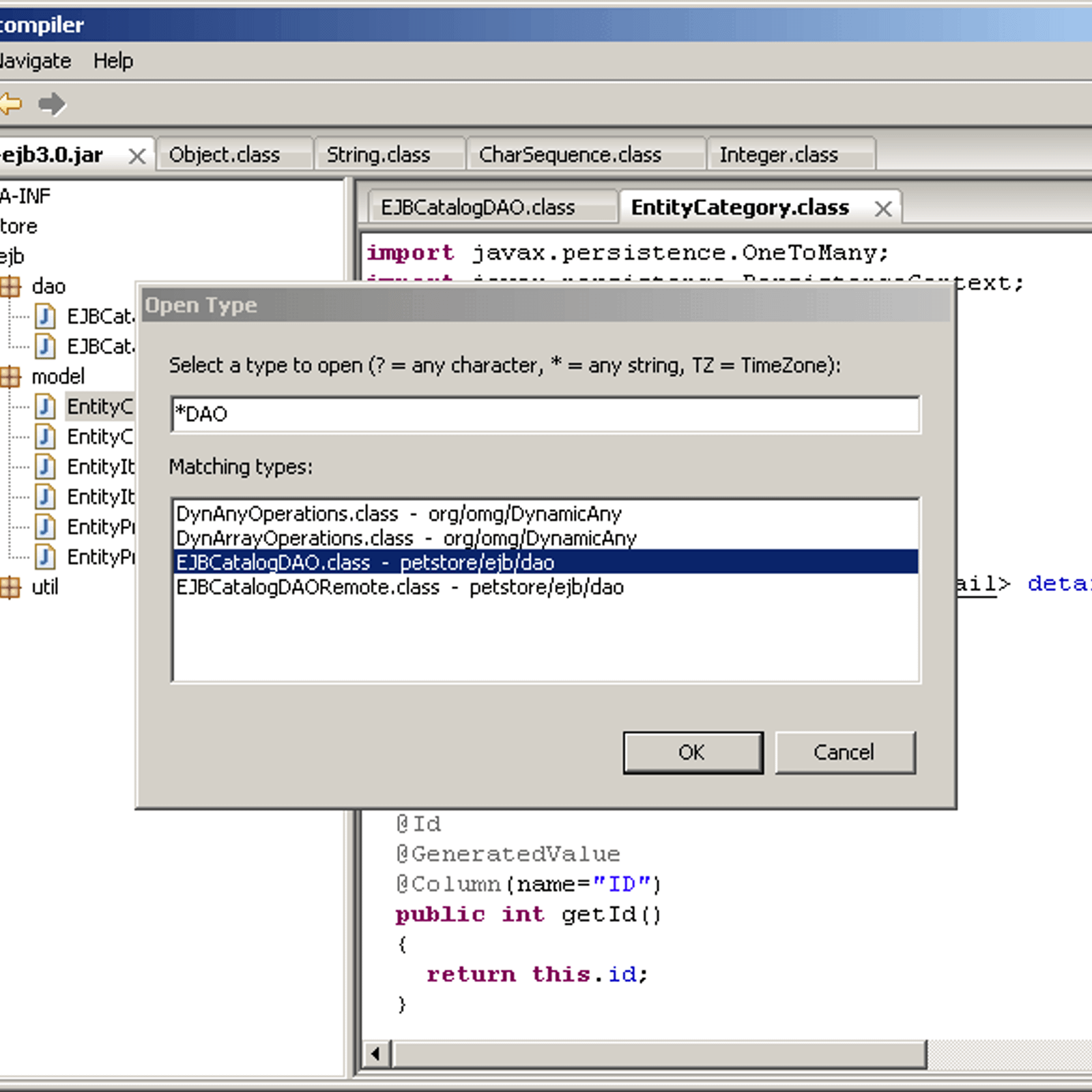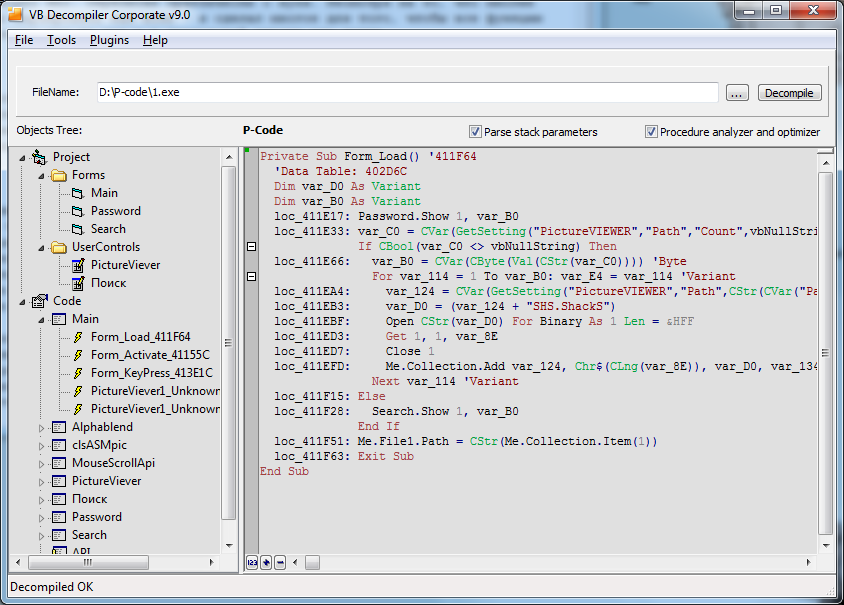JDecompiler

JDecompiler (Java Decompiler) Overview Currently, there are most of java decompilers, but all of them use their own editors to view the decompiled source code. JDecompiler is a very small tool that can decompile the java class file very easily. What's the advantage of JDecompiler. Samsung tv firmware hack. It is very small, and very fast to run.
Page: 2 (Continued from page 1) Now, let's set up Eclipse to automatically decompile classes for us. Download the JadClipse Eclipse plug-in from. Put it in your plugins directory and restart Eclipse. Below, you can see it in my 'externalized' plugins directory.
If JadClipse is installed correctly, in Window → Preferences, you should now have a Java → JadClipse entry. If you added your jad directory to your system path as shown above, your 'Path to compiler' entry should be fine. If you didn't, you'll need to modify the path to JAD so that JadClipse can find it. I modified my temporary files directory from the default to go to C: temp.jadclipse, but this is not necessary.
In Window → Preferences, you should check your General → Editors → File Associations to be sure that the JadClipse Class File Viewer is set as the editor for your *.class files. Let's try JadClipse out. As an example, I downloaded the Jakarta Commons Lang library from.

Although this library does have source code available, let's not use it so that we can see JadClipse in action. I created a /lib directory in my project, put the commons-lang jar file in the directory, and then added the jar file to the project's classpath (this can be set by right-clicking the project name, going to Properties, and adding the jar file to the Java Build Path). I'll use Common Lang's StringUtils class within my Test class. Now that I've done this, I can select the StringUtils class and hit F3 to jump to the StringUtils class. This brings up the JadClipse Class File Viewer. As you can see, JAD decompiles the StringUtils.class file and displays the results. Audio books free download.
Java class decompilation with a click! (Continued on page 3).